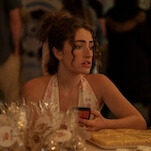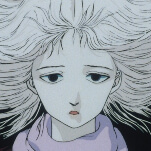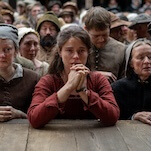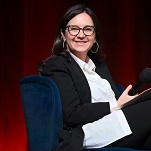Jim Davis wanted Garfield’s Halloween Adventure to “at least scare 4-year-olds”
Twenty-five years ago this October, Jim Davis’ popular comic strip Garfield took an unexpected detour through The Twilight Zone, running a week-long dream sequence in which the orange tabby with an insatiable appetite wakes up alone in a long-abandoned house. Surreal, unsettling, and free of punchlines, the storyline proved divisive among the strip’s audience. But this wasn’t Garfield’s first brush with the horror genre: That came four years prior, in the animated primetime special Garfield In Disguise. Later retitled Garfield’s Halloween Adventure, the Emmy-winning program became a seasonal staple for CBS, spooking a whole generation of young viewers with eerie ghost effects and one gruesome storyteller. With Garfield’s Halloween Adventure now bundled with four other specials on the DVD and digital release Garfield Holiday Collection—available at Walmart beginning November 4 and on iTunes beginning November 11—The A.V. Club spoke with Jim Davis about the Halloween special, the lasting effect it had on its audience, and his reasons for stranding Garfield in that spooky house in 1989.
The A.V. Club: Garfield’s Halloween Adventure is a departure from the Thanksgiving and Christmas specials, which focus more on family and holiday traditions. What did you want to achieve with the Halloween special?
Jim Davis: I wanted to start it with something very familiar: Garfield going into the day being Garfield with the “candy, candy, candy”—going out trick-or-treating, things like that. Then I wanted to turn it. I wanted to go somewhere that would at least scare 4-year-olds. The only way I could do that was to get [Garfield and Odie] away from the house and the neighborhood—so that’s what the boat represented: if they lost control and then the boat took them somewhere else. Wherever they end up, it’s going to be a lot more believable than it would be if it was in Garfield’s house. I did have to rely on and fall back on things like ghosts and pirates, but I think the marriage of it with the music and the use of Lindsay Workman—just a great character actor with that great, deep voice as the old pirate.
Getting special effects was a bit of a challenge because it was 1985 and we were still doing things on film. We actually animated the pirate ghosts in Indiana because we wanted to do it in white and get a sort of swirly, cross-dissolve kind of effect. Then we did what’s called a double burn, where we’d get them to glow. These days, in digital, you just press the “glow” button and it glows. [Laughs.] We worked the special very hard to get just the right timing and the right music and the build—just building, building, building. If you listen, in the background, there’s even a heartbeat at one point, to get the kind of action going that we wanted.
Believe it or not, we really pushed the limits of what Standards And Practices would allow as far as being scary. As soft and as family-oriented as it appears today, we rode the line.
AVC: Was there anything specific that CBS’ Standards And Practices disapproved of?
JD: It was just the look and the timing—it was hard to grasp because they said, “scaring kids.” [Laughs.] “Too scary.” We could have the ghosts, but we couldn’t have anyone touch anyone else in a threatening way. It couldn’t be anything that appeared to be physical harm. Even with Garfield waking John up: He could put his hand on John’s cheeks, but he couldn’t put it on his shoulders, because it was too close to the throat. We couldn’t do that, and we had to change a piece of animation in that part of it.
AVC: What is it like to write something that’s intended for a young audience but also intended to be scary?
JD: It wasn’t so much the writing as it was the hearing and seeing it in your head. It was the timing. It was the cutting back to the clock going “tick, tick, tick,” getting closer to midnight. One of the things I think we did that was fairly effective was we slowed the show down: We didn’t do the kinetic Warner Bros. kind of timing with that kind of action. You really had to stop things and let it build and let the kids let their own imaginations play with them. You have to stand back and let them do a little bit of the work, rather than feeding them everything. That’s really tough! [Laughs.] Not everybody thinks quite the same way, so you try to go down the middle of the line.








































